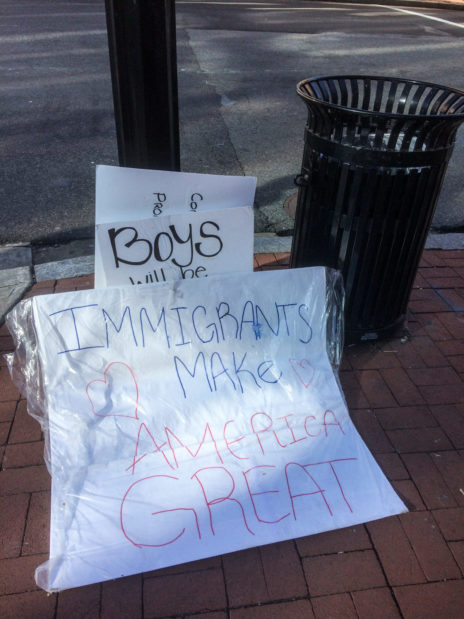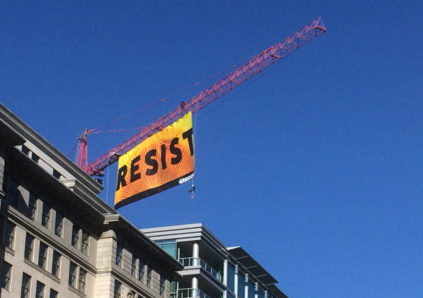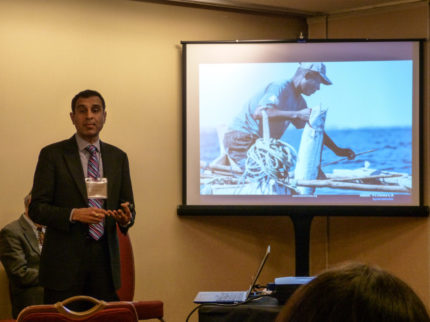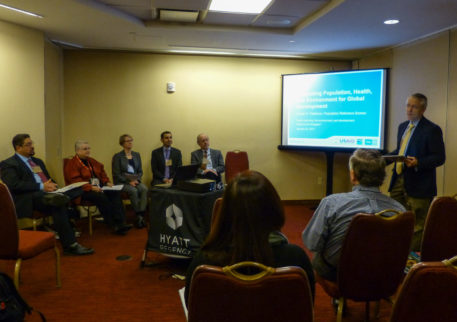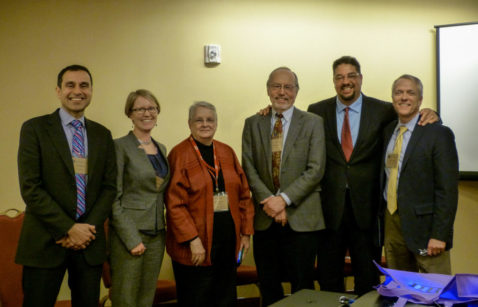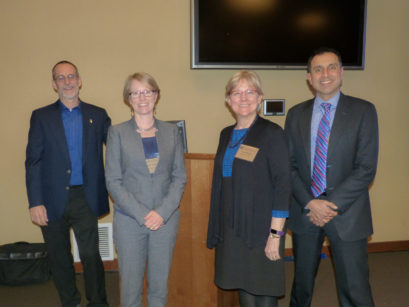I missed the women’s march.
My airport shuttle bus crawled towards downtown Washington DC, the heavy traffic and road closures meaning that there was no way I would reach town in time to join the march. By the time the Washington memorial came into view, it was already over. Eventually the bus driver suggested I continue my journey on foot, the road closures preventing him from getting us any further. I stepped into what felt like the tail-end of the Notting Hill Carnival: high-spirited groups of people laughing together at street corners, people dressed in flamboyant outfits, lots of litter. What distinguished the event as a political march was the large number of people carrying placards, bearing slogans that often powerfully combined humour with indignation.
Once on the metro, I was surrounded by marchers making their way home, and excitedly quizzed anyone willing to chat to a Brit with a suitcase. In between trading punches over Trump and Brexit (no one could resist making the comparison), I was struck by the strength of public feeling about Trump’s presidency (and not just about women’s rights) and how well-informed all of the protesters appeared to be. It was great to see how positive and peaceful the whole event had been, too. In one of the biggest marches in Washington’s history (conservative estimates put the number of people at 500,000), there were no arrests or casualties. I’d missed the march, but was grateful for the insider’s view of the event’s aftermath that was being afforded to me.
I’d been invited to DC by our friends at the Population Reference Bureau for the 2017 NCSE conference, which this year was focusing on the links between health and the environment; a perfect opportunity to showcase our holistic approach to conservation. Of the various ways in which this “Population-Health-Environment” model can be examined, the conference delegates seemed most interested in how it can help communities become more resilient to climate change.
The more we discussed this, the more convinced I became that we in the PHE community have the skills and understanding needed to support initiatives that build resilience: an ability to operate at a systems level and manage complexity; expertise in multi-sector programming; a deep understanding of how a community-based approach can best enable these people to respond to the challenges that climate change will present.
The mood of the conference, however, was sober, with concern expressed about the future of funding for science, environmental protection, reproductive health and overseas development. Many expressed doubts too over whether the Trump administration will pay any attention to what science is telling us about our changing climate.
As governments look to cut development budgets and maximise the cost-effectiveness of development programmes, it’s invariably the most vulnerable, the most marginalised and the hardest to reach (meaning the most expensive to reach) who risk getting left behind. Clearly we need to more proudly proclaim that PHE goes the last mile, that the hardest to reach are the beneficiaries of the PHE movement. My concern is that PHE programmes risk facing a double loss of reproductive health and environmental conservation funding. Should that happen, the potential of this approach as a way of building resilience to climate change, or reaching the hardest to reach, may never be fully realised.
Yet whilst US efforts to support PHE face these uncertainties, it’s heartening to see so many people still working so passionately to promote PHE and seeking to identify ways to engage with the new US administration.
It’s clearly more important than ever that we continue with the work that the PHE movement has started. I hope that facing this new set of challenges serves to strengthen our collective resolve; the protest marches that we’re witnessing around the world seem to suggest this is exactly what is happening. We need our passion and our courage more than ever. We need to continue to innovate and find workable solutions to the evolving challenges that people and our planet are facing. If the new US president is really going to put America first, then we need to be more committed than ever to keep putting communities first.
My journey back to the airport took 45 minutes; the journey from the airport on the day of the march had taken me five hours. I tried to comprehend the fact that half a million people had been marching through these streets on that day, and felt humbled by the conviction and hope that I had witnessed in DC. I feel fortunate that at Blue Ventures we’re able to channel our energy into our work, helping to rebuild fisheries with some of the world’s hardest to reach communities. I also feel comforted by the fact that in this work, we’re marching in step with people from all over the world; people who share our vision for the world that we all want to help create.


